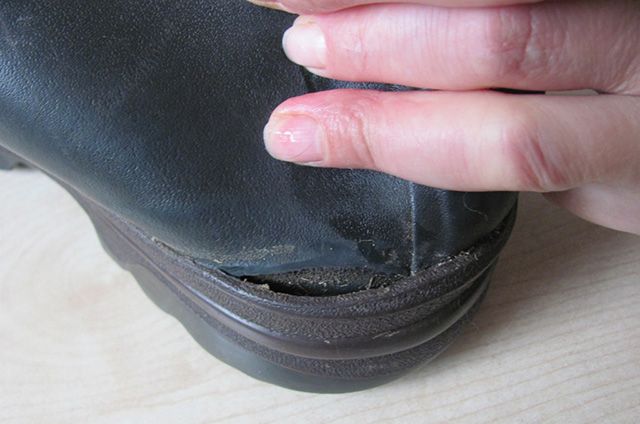 Rubber boots have become an indispensable assistant for tourists and mushroom pickers, fishermen and rafters - by taking them on a hike, you can forget about the problem of wet feet.
Rubber boots have become an indispensable assistant for tourists and mushroom pickers, fishermen and rafters - by taking them on a hike, you can forget about the problem of wet feet.
By protecting your feet from getting wet, rubber boots can become a means of protection against lightning: rubber is an excellent dielectric, non-conducting.
There are, however, annoying cases:
- He was wading across the river and, not calculating the depth, scooped it up with the edge of his boot.
- I stumbled while jumping from hummock to hummock in the swamp and fell into a puddle.
- I left my boots near the tent, not thinking about the overnight rain.
- I just dropped my boots in the water.
Then the problem of emergency drying of boots in wild conditions arises.
Attention! When going on a hike, take care of cloth and flannel insoles, and take a spare set. Don't forget wool socks, even if you bought boots with fleece.
Methods for drying boots while hiking
In the harshest conditions, there is an opportunity to dry your shoes. You need to start by cleaning the dirt, not forgetting to remove the insoles. Ideally, wash with soap and warm water with a cloth.
Advice! If you find glycerin in your first aid kit, you should donate a drop to wipe your boots - they are guaranteed to last longer.
 Sometimes nature itself is on the hiker’s side - the sun and wind can quickly cope with the consequences of unexpected getting wet. But you need to make sure that the drying area does not fall into the shade. It is more effective to hang it in an open place.
Sometimes nature itself is on the hiker’s side - the sun and wind can quickly cope with the consequences of unexpected getting wet. But you need to make sure that the drying area does not fall into the shade. It is more effective to hang it in an open place.
Drying by the fire is allowed, which is fraught with loss if you do not monitor the process and organize it too close to the fire. You can use two ways to dry:
- Dry in your hands. This makes it easier to prevent shoes from accidentally falling into the fire. It is ideal to keep the boots with the neck towards the heat, at a distance where it does not get hot.
- We use pegs. Having driven them at a safe distance from the fire, we hang boots stuffed with paper or dry grass on them.

Let’s say you can’t make a fire or you don’t have time, and the weather is not on your side. Any of the absorption options remains. For example, through socks and the warmth and heaviness of your own body: we put on a sock, put our foot in a boot, take it out and squeeze it out, and so on many times. The only way to dry is when there is no time to arrange a halt and you have to dry it directly on yourself. If you can stay in place for a while, a microfiber towel—either kitchen or personal—will do the job perfectly.
In addition to special products like newspaper and toilet paper, natural materials are good: dry grass and moss (you'll be lucky if it's sphagnum - its absorption is phenomenal!), oat stalks and dry leaves.
Attention! Sometimes on a hike, items used for other purposes come to the rescue: women's pads as insoles can cope with the problem of wet shoes in the shortest possible time.
If your boots are leaking...

...This means that the most unpleasant of abnormal cases has occurred - a hole due to a puncture or peeling of the sole. You can try to save this part of your equipment with the help of a simple repair kit (common among fishermen and lovers of water tourism - they sometimes have to glue their watercraft):
- A patch is cut to size from a piece of rubber material.
- The surfaces to be sealed and the patch are degreased with a solvent. There should not be any foreign inclusions (threads from rags, cotton wool residues) on them!
- We take any rubber glue (usually “Super Moment”), apply it and cure it according to the instructions.
- To ensure reliability, the patch is tapped with something heavy (a round stone or a can of stew will do).
Some tips when choosing boots
- You should always take a size larger - the rubber does not wear out, and you need a reserve for the sock.
- The preference for soles is corrugated ones: there is less chance of slipping.
- The thickness and quality of the rubber is a subject of special attention: at least eight mm and no irregularities!
- It’s better to leave a fashionable model with a zipper (by the way, it should have a backing in any case!) for the city, and take a classic model on a hike.
- The lining should be made of cotton, not synthetic.
- All joints between parts must be strong, especially at the sole, which should be as if welded to the boot.


 0
0





